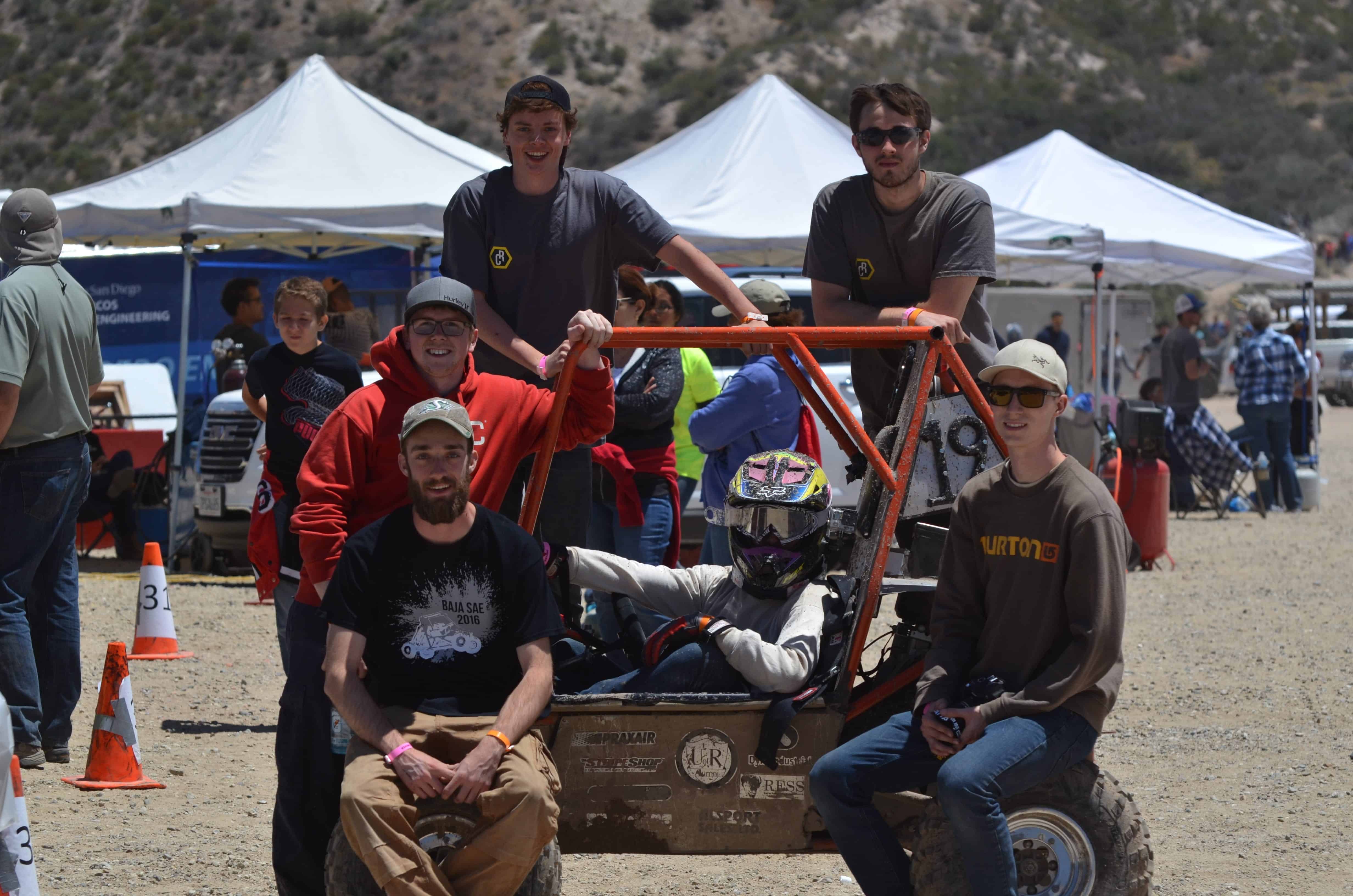Cougar engineers race in California

Author: matt wincherauk | editor in chief

This car is powered by friendship.
by sean lobb
Engineering students test their might in the Baja SAE
This past weekend, the Cougar Racing team competed with over 100 other teams from some of the top universities in the world in the Baja SAE competition down in Gorman, California. The group is made up of 23 engineering students, and was led by a crew of six consisting of Derek Dawson (president), David Taylor (lead designer/captain), Scott Moeller (assistant designer), Richard Bourlon (fabrication), Matt Koshman (electrical) and Sean Lobb (former president). The six members of the team travelled down to Gorman over the course of May 19-22, withstanding the grueling 30-hour drive in just to get to the competition.
So, what was the point of the competition? Teams from around the world were expected to create a prototype baja race car for a mock company to invest in, with a potential reward of up to a few thousand dollars. However, Lobb explained that the prize was less about the money, and more about the experience of the competition, and the thrill of seeing your creation in action.
“The top teams win a cash prize, but it isn’t much more than a couple thousand dollars ever,” Lobb said. “The competition is really about the reward you get in seeing your design working in real life.”
After arriving at the event, the Cougars Racing team were put through rigorous inspection in order to maintain fairness amongst all teams.
“The event starts with all of the cars going through an engine inspection to ensure every car has the same power output,” Lobb stated. “This forces teams to design a better chassis and drivetrain to get the most out of the allotted power, rather than the competition turning into a ‘who had the biggest engine’ war.”
After the engine inspection, the teams go through a technical inspection, with Lobb described as being “very, very thorough,” following a strict rule book that the team must adhere to throughout the designing process. This is make or break for many teams, as those who don’t stay up to code, might not even be allowed to compete.
“It is a very stressful day, and some teams end up not even being able to compete because they cannot pass this inspection. You can fix your problems and go back to tech inspection, but it can take serious time.”
Fortunately for Lobb and the team, the Cougars vehicle passed with flying colours, and the team competed above their own expectations.
“Competition this year was a true test; experience wise we are nearly a first-year team; so going into things with an untested car is always interesting,” Lobb told the Carillon. “In tech inspection we discovered that our cockpit area was a little too narrow for safety reasons, so we had to add in wider exo-braces to give us some more room. Other than that, technical inspection didn’t have much to say about our car, which is actually a great thing! We were very happy with how things went.”
Even though the competition is primarily made up of engineers, Lobb (geology) stressed that all faculties are welcome. To Lobb and the Cougars team, the competition is all about reward in “designing, building, racing, and sometimes even breaking your own race car.”
After a long weekend, the Cougar team came home exhausted, yet satisfied with their showing in Gorman. Despite the perils of the course, Lobb was happy with how the team competed despite amidst the tough conditions of the course.
“The car still performed at a competitive level even with this damage. We went home with smiles on our faces, no regrets, and a hunger to start the next season.”
Along with the AgBot built earlier this year by a number of other University of Regina engineering students, the Cougar Racing continued the high quality of work put out by the faculty, and represented the U of R well.








